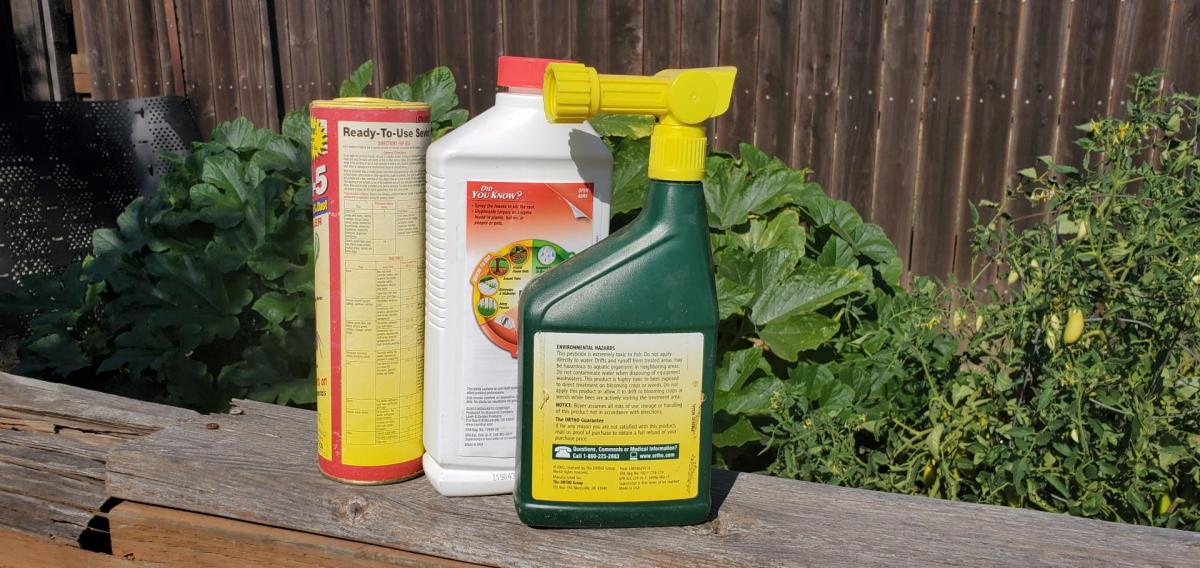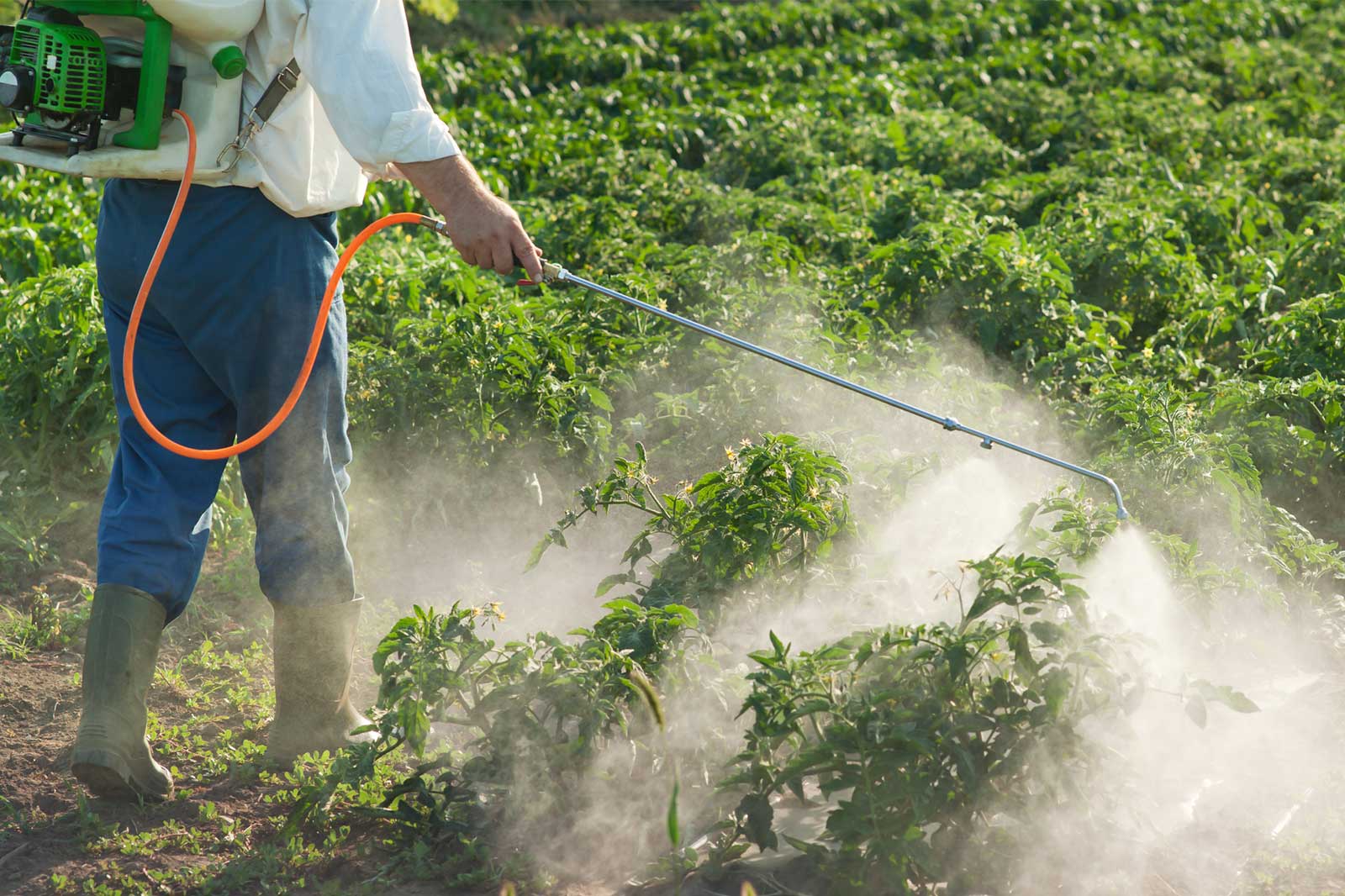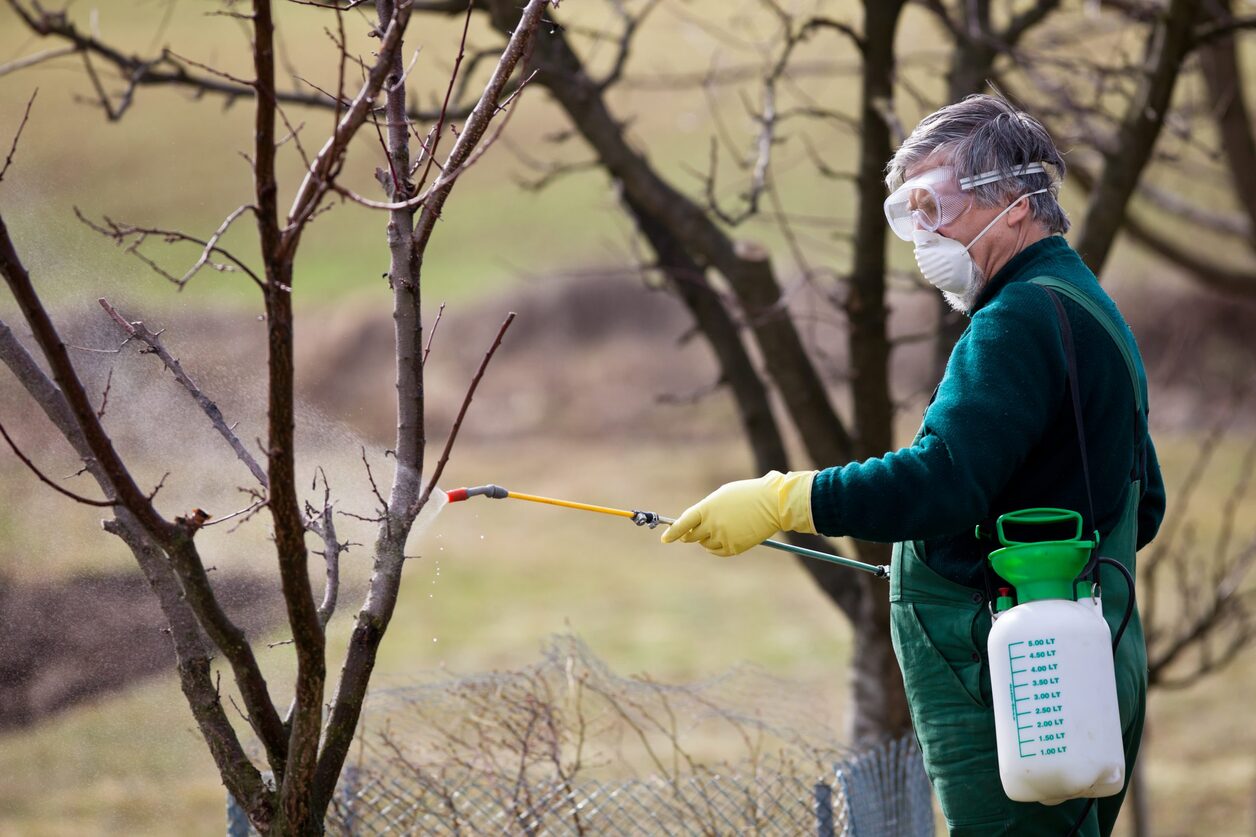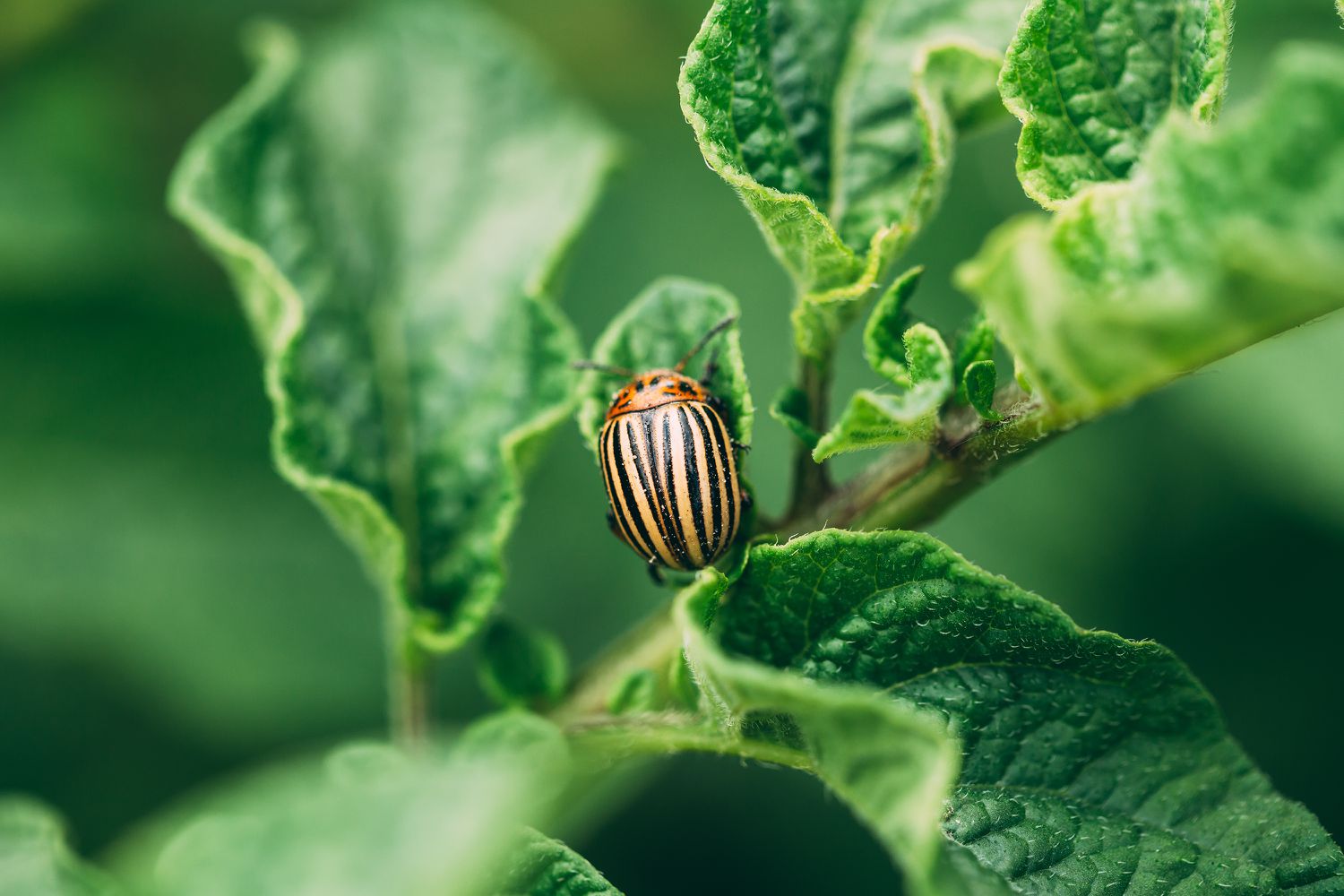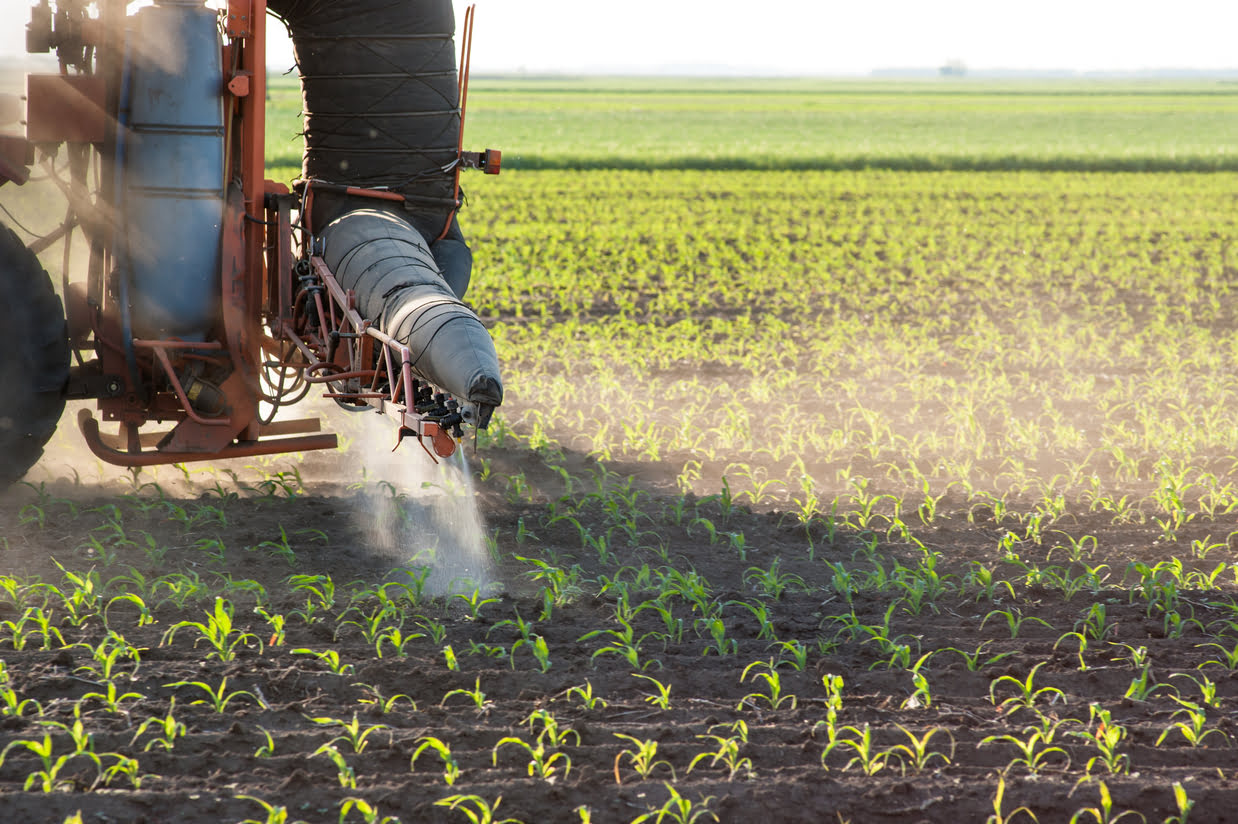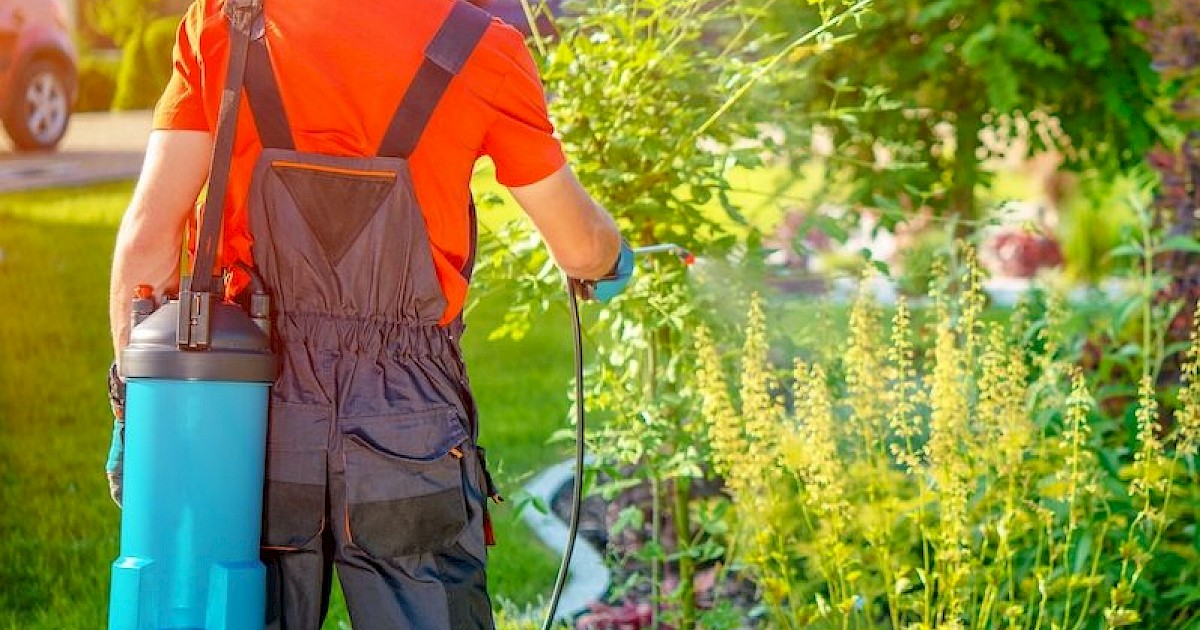Home>Gardening News and Trends>Latest News>What Chemicals Are In Pesticides
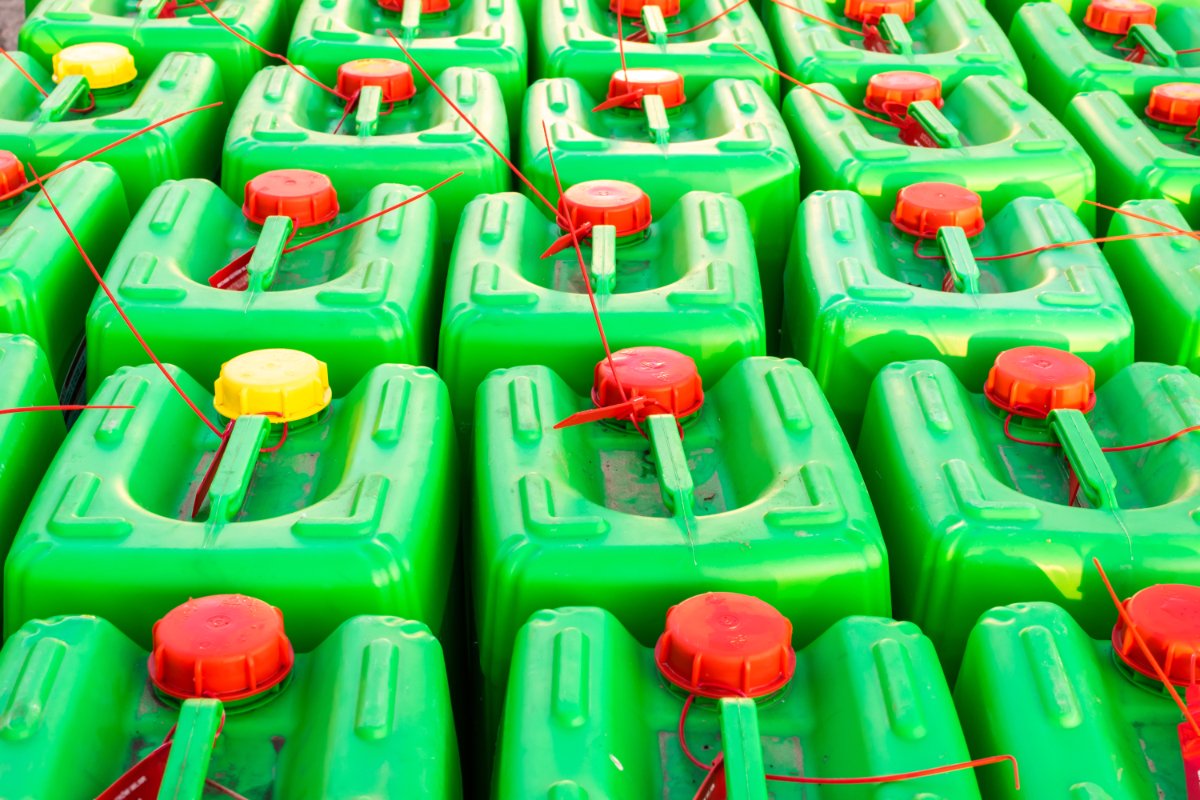

Latest News
What Chemicals Are In Pesticides
Modified: January 22, 2024
Discover the latest news on what chemicals are in pesticides and how they impact the environment. Stay informed and make informed choices for your health and the planet.
(Many of the links in this article redirect to a specific reviewed product. Your purchase of these products through affiliate links helps to generate commission for Chicagolandgardening.com, at no extra cost. Learn more)
Table of Contents
Introduction
Pesticides play a critical role in modern agriculture, helping to protect crops from pests, diseases, and weeds. They are chemical substances designed to control or eliminate unwanted organisms that can damage crops and reduce yields. Pesticides can be found in various forms, including liquids, solids, dusts, and gases, and are applied through sprays, granules, or baits.
There are numerous types of pesticides available on the market, each serving a specific purpose and targeting different pests. Understanding the chemicals used in pesticides is crucial for ensuring effective pest control while also considering the potential health and environmental impacts. In this article, we will explore the common types of pesticides and the active ingredients they contain.
Pesticides are categorized based on their target pests and can include herbicides, insecticides, fungicides, and rodenticides. Herbicides are used to control unwanted vegetation, while insecticides target insects and other arthropods. Fungicides protect crops from fungal infections, and rodenticides are designed to eliminate rodents. Additionally, adjuvants and other chemicals are commonly added to pesticides to enhance their effectiveness.
It is important to note that pesticides can be classified as synthetic or organic. Synthetic pesticides are chemically manufactured and often more potent, while organic pesticides are derived from natural materials and are considered more environmentally friendly. Both types have their advantages and disadvantages, with potential health and environmental concerns associated with pesticide use.
It is crucial for farmers, gardeners, and consumers to be aware of the chemicals in pesticides and their potential impacts. This knowledge can help ensure the responsible and safe use of these substances, minimizing risks to human health and the environment. In the following sections, we will delve into the specific types of pesticides and their active ingredients, as well as the potential concerns and regulations surrounding their use.
Common Types of Pesticides
Pesticides come in various types, each specifically designed to target different pests and serve different purposes. Understanding the common types of pesticides can help in selecting the right product for the desired pest control. Let’s take a closer look at some of the most common types:
1. Herbicides: Herbicides are used to manage unwanted vegetation, such as weeds and grasses, that compete with crops for nutrients, sunlight, and water. They can be selective, targeting specific types of plants, or non-selective, affecting a broad spectrum of vegetation. Herbicides come in different formulations, including pre-emergent, post-emergent, and systemic, offering various modes of action to control weeds effectively.
2. Insecticides: Insecticides are designed to control and eliminate insects and other arthropods that can cause damage to crops. They can be categorized based on the specific insect they target, such as mosquito insecticides or aphid insecticides. Insecticides can disrupt insect physiology, nervous system, or reproduction, effectively reducing their population and minimizing damage to crops.
3. Fungicides: Fungicides are used to prevent or control fungal diseases that can impact plant health and reduce crop yields. They are commonly applied to protect fruits, vegetables, and other susceptible plants from fungal infections. Fungicides work by inhibiting the growth and reproduction of fungi, preventing the spread of diseases and maintaining plant health.
4. Rodenticides: Rodenticides are used to control rodent populations, including rats and mice, that can cause significant damage to crops and transmit diseases. These pesticides are typically formulated as baits or traps and contain lethal substances that target the rodents’ digestive or nervous systems. It’s important to use rodenticides responsibly to prevent harm to non-target wildlife or pets.
In addition to these primary types, there are also other specialized pesticides such as molluscicides for controlling mollusks, nematocides for targeting nematodes, and avicides for deterring birds. These pesticides serve specific purposes and are used based on the specific pest problem at hand.
Understanding the different types of pesticides and their targeted pests is essential for implementing effective pest management strategies. By selecting the appropriate pesticide based on the specific pest problem, farmers and gardeners can minimize damage to crops, improve yields, and promote sustainable agriculture practices.
Active Ingredients in Pesticides
The effectiveness of pesticides is largely dependent on their active ingredients, which are the chemicals responsible for controlling or eliminating pests. These active ingredients can vary widely, and their selection depends on the type of pest being targeted and the desired mode of action. Let’s explore some common types of active ingredients found in pesticides:
1. Pyrethroids: Pyrethroids are synthetic versions of pyrethrins, which are naturally occurring insecticides derived from chrysanthemum flowers. Pyrethroids are widely used in insecticides to combat a broad range of insects. They work by affecting the nervous system of insects, leading to paralysis and ultimately death.
2. Organophosphates: Organophosphates are a class of pesticides that are commonly used as insecticides and herbicides. They work by inhibiting the activity of enzymes in the nervous system of pests, resulting in paralysis and death. Organophosphates have been widely used but have faced increasing scrutiny due to their potential negative impacts on human health and the environment.
3. Neonicotinoids: Neonicotinoids are systemic insecticides that are absorbed by plants and distributed to various parts, including leaves, stems, and flowers. They are effective against a wide range of insect pests, including aphids, beetles, and whiteflies. However, neonicotinoids have been associated with negative impacts on pollinators, such as bees, and have faced restrictions in some countries.
4. Glyphosate: Glyphosate is a broad-spectrum herbicide used to control unwanted vegetation. It works by inhibiting an enzyme essential for plant growth, ultimately leading to the death of targeted plants. Glyphosate has faced controversy in recent years due to concerns about its potential impacts on human health and the environment.
5. Copper Compounds: Copper compounds, such as copper sulfate, are commonly used in organic fungicides. These compounds work by disrupting the enzymes and proteins necessary for fungal growth and reproduction.
These are just a few examples of active ingredients found in pesticides. The selection and use of active ingredients depend on factors such as the target pest, the desired mode of action, and regulatory guidelines. It is important to use pesticides responsibly, following proper dosage rates and safety precautions, to minimize potential risks to the environment and human health.
Synthetic Pesticides
Synthetic pesticides are chemically manufactured pesticides that are widely used in modern agriculture. They have been instrumental in increasing crop yields and protecting plants from pests, diseases, and weeds. These pesticides are developed through extensive research and undergo rigorous testing to ensure their efficacy and safety. Let’s explore some key aspects of synthetic pesticides:
1. Advantages of Synthetic Pesticides: Synthetic pesticides offer several benefits in pest control. They often provide quick and effective results, helping farmers combat pests and protect their crops. These pesticides can target a wide range of pests and have specific modes of action to address different pest problems. Additionally, synthetic pesticides can be formulated for easy application, allowing farmers to apply them in the most suitable manner.
2. Potency and Persistence: Synthetic pesticides are often more potent than their organic counterparts, enabling them to effectively control pests at lower concentrations. These pesticides can also remain active in the environment for longer periods, providing extended protection against pests and diseases. However, this persistence can also raise concerns about potential impacts on non-target organisms and the environment.
3. Health and Environmental Concerns: The use of synthetic pesticides has raised concerns about potential risks to human health and the environment. Some pesticides may pose health risks to agricultural workers who handle them, as well as to consumers who may be exposed to pesticide residues on food. Additionally, synthetic pesticides can have negative impacts on non-target organisms, including beneficial insects, birds, and aquatic life, leading to ecological imbalances.
4. Integrated Pest Management (IPM): To mitigate the potential drawbacks associated with synthetic pesticides, many agricultural practices now incorporate Integrated Pest Management (IPM) approaches. IPM involves the use of multiple strategies, such as biological control, crop rotation, and mechanical methods, alongside judicious use of synthetic pesticides. This holistic approach aims to minimize pesticide use while maintaining pest control and promoting sustainable agricultural practices.
5. Regulations and Safety Measures: Synthetic pesticides are regulated by government authorities to ensure their safe use in agricultural practices. Pesticide labels provide instructions for proper handling, application rates, and safety precautions. Farmers and pesticide applicators are encouraged to follow these guidelines to minimize potential risks to human health and the environment.
While synthetic pesticides have played a vital role in modern agriculture, their use should be approached with caution. It is important to consider alternative pest control methods and follow recommended safety measures to minimize potential risks and promote sustainable farming practices.
Organic Pesticides
Organic pesticides are derived from natural sources and are widely used in organic farming practices. These pesticides are considered more environmentally friendly compared to synthetic pesticides as they are derived from naturally occurring substances. Let’s explore some key aspects of organic pesticides:
1. Natural Ingredients: Organic pesticides utilize natural ingredients, such as plant extracts, minerals, and microorganisms, to control pests, diseases, and weeds. Common examples include neem oil, pyrethrin, sulfur, and Bacillus thuringiensis (Bt). These ingredients are often selected based on their effectiveness against specific pests and their minimal impact on the environment.
2. Reduced Environmental Impact: Organic pesticides are generally considered to have reduced environmental impact compared to synthetic pesticides. They are often less persistent in the environment and biodegradable, reducing the risk of long-term harm to non-target organisms and ecosystems. Organic pesticides are also less likely to leave toxic residues on crops, resulting in safer food products.
3. Integrated Pest Management (IPM): Organic farming practices emphasize the use of Integrated Pest Management (IPM), which includes the strategic use of organic pesticides alongside other environmentally friendly pest control methods. IPM in organic agriculture aims to prevent pest problems through practices such as crop rotation, habitat diversification, and biological control. Organic pesticides are typically used as a last resort when other pest control methods are not sufficient.
4. Regulatory Standards: Organic pesticides are subject to regulations and standards set by organic certification bodies. These standards ensure that the ingredients used in organic pesticides are derived from natural sources and meet specific criteria for organic farming. Organic farmers must adhere to these standards to maintain their organic certification.
5. Residue Management: Organic farmers must also carefully manage pesticide residues to ensure compliance with organic standards. This involves following strict guidelines for application rates, timing, and re-entry intervals to minimize residues in harvested crops.
Organic pesticides offer a viable alternative to synthetic pesticides, particularly for those seeking to minimize their environmental impact and promote sustainable agricultural practices. However, it is important to note that even organic pesticides should be used judiciously and as part of an integrated pest management approach to ensure effective pest control while minimizing risks to the environment and human health.
Herbicides
Herbicides are a type of pesticide specifically designed to control unwanted vegetation, commonly known as weeds. They play a crucial role in modern agriculture and landscaping by helping to manage weed populations that compete with crops or disrupt the aesthetic appeal of outdoor spaces. Let’s explore some key aspects of herbicides:
1. Selective and Non-Selective Herbicides: Herbicides can be categorized as selective or non-selective. Selective herbicides target specific types of plants while leaving desirable plants unaffected. This allows for targeted weed control without harming crops or desirable vegetation. Non-selective herbicides, on the other hand, affect a broad range of plant species and are often used for total vegetation control in areas such as driveways, sidewalks, or fence lines.
2. Pre-Emergence and Post-Emergence Herbicides: Herbicides can also be classified based on when they are applied in relation to the growth of weeds. Pre-emergence herbicides are applied before weed seedlings emerge from the soil. They create a barrier that inhibits weed germination and root development. In contrast, post-emergence herbicides are applied after weeds have emerged, targeting established weeds more effectively.
3. Systemic and Contact Herbicides: Herbicides can be further classified based on their mode of action. Systemic herbicides are absorbed by the plant and transported throughout its vascular system, reaching the roots, shoots, and leaves. These herbicides provide longer-lasting control as they affect the entire plant. Contact herbicides, on the other hand, only affect the parts of the plant that come into direct contact with the herbicide spray. They provide more immediate results but may require repeated applications for complete weed control.
4. Herbicide Resistance: Over time, some weed populations can develop resistance to certain herbicides, making them less effective. This is often a result of repeated use of the same herbicide or using herbicides with the same mode of action. To combat herbicide resistance, it is important to practice herbicide rotation and use multiple modes of action in weed management strategies.
5. Environment and Human Health Considerations: While herbicides can be effective tools in weed control, it is important to consider their potential impacts on the environment and human health. Proper application techniques, adherence to label instructions, and following safety precautions are essential to minimize unintended harm. Additionally, alternative weed management practices, such as mulching, manual weeding, or utilizing cover crops, can help reduce reliance on herbicides.
Herbicides are valuable tools in weed management, allowing farmers, gardeners, and landscapers to maintain weed-free environments. However, it is important to use herbicides responsibly, considering their potential impacts on non-target plants, water sources, wildlife, and human health. Integrating herbicides with other weed control methods can lead to more sustainable and effective weed management practices.
Insecticides
Insecticides are a type of pesticide specifically formulated to control and eliminate insects and other arthropods that can cause damage to crops, transmit diseases, or pose a nuisance. They play a crucial role in protecting plants and promoting agricultural productivity. Let’s explore some key aspects of insecticides:
1. Targeted Pest Control: Insecticides are designed to target specific pests, such as aphids, beetles, or mosquitoes, depending on the specific needs of the crop or situation. They work by affecting the physiology, behavior, or reproduction of the insects, resulting in their death or disruption of their life cycle.
2. Systemic and Contact Insecticides: Insecticides can be classified as systemic or contact-based on their mode of action. Systemic insecticides are absorbed by plants and transported to various parts, including leaves, stems, and flowers. When insects feed on these plants, they ingest the insecticide and are affected. Contact insecticides, on the other hand, only affect the insects they come into direct contact with. These insecticides are commonly used for spot or targeted treatments.
3. Broad-Spectrum and Selective Insecticides: Insecticides can also be categorized as broad-spectrum or selective. Broad-spectrum insecticides control a wide range of insect pests but may also harm beneficial insects, such as pollinators or natural predators. Selective insecticides, on the other hand, target specific pests while minimizing harm to non-target organisms, preserving ecological balance, and promoting integrated pest management practices.
4. Environmental and Human Health Considerations: The use of insecticides raises concerns about their potential impact on the environment and human health. It is important to carefully consider the potential risks and benefits associated with each insecticide. Integrated Pest Management (IPM) strategies, which incorporate multiple pest control methods and prioritize non-chemical control measures, can help minimize reliance on insecticides and reduce their potential negative impacts.
5. Emerging Trends: In recent years, there has been a growing interest in developing and using more environmentally friendly insecticides, such as biopesticides derived from natural sources. These biopesticides include microbial-based products, botanically derived substances, and insect growth regulators. These alternatives aim to provide effective pest control while reducing potential risks to the environment, beneficial insects, and human health.
Insecticides are valuable tools in pest management, helping to protect crops, prevent disease transmission, and maintain healthy environments. Responsible use, proper application techniques, and adherence to label instructions are essential to minimize unintended harm and promote sustainable pest control practices.
Fungicides
Fungicides are a type of pesticide specifically designed to control and eliminate fungal diseases that can impact plants and crops. These diseases, caused by various types of fungi, can affect plant health, reduce yields, and even lead to crop losses. Fungicides play a critical role in protecting plants and ensuring healthy harvests. Let’s explore some key aspects of fungicides:
1. Targeted Disease Control: Fungicides are formulated to target specific fungal diseases or groups of fungi. They work by inhibiting fungal growth, preventing spore germination, interfering with fungal metabolism, or disrupting fungal cell membranes. This targeted approach allows for effective disease control while minimizing harm to non-target organisms.
2. Protective and Curative Action: Fungicides can have both protective and curative properties. Protective fungicides are applied before the onset of disease to prevent infection by creating a protective barrier on the plant’s surface. Curative fungicides, on the other hand, are applied after infection has occurred to halt the disease progression and limit further spread.
3. Broad-Spectrum and Specific Fungicides: Fungicides can be categorized as broad-spectrum or specific. Broad-spectrum fungicides offer control against a wide range of fungal diseases, making them versatile and effective. However, they may also have a stronger impact on non-target organisms. Specific fungicides, on the other hand, target specific diseases or groups of fungi, reducing the risk of harming beneficial organisms and promoting integrated disease management.
4. Multiple Application Methods: Fungicides can be applied in various ways, depending on the target crop and disease. Common application methods include foliar sprays, seed treatments, soil drenches, and fumigation. The application method chosen depends on the disease type, the stage of crop growth, environmental conditions, and the specific fungicide being used.
5. Resistance Management: Fungicide resistance is a concern in agriculture, where repeated use of the same fungicide mode of action can lead to the development of resistant fungal strains. To mitigate resistance, it is important to practice fungicide rotation and use multiple modes of action. Integrated Disease Management (IDM) strategies, such as cultural practices, crop rotation, and resistant varieties, should also be employed to reduce reliance on fungicides.
Fungicides are valuable tools in disease management, helping farmers and gardeners protect their crops and ensure healthy plant growth. When used judiciously, following recommended application rates and safety guidelines, fungicides can be an essential component of integrated disease management strategies and contribute to sustainable agriculture practices.
Rodenticides
Rodenticides are a type of pesticide specifically designed to control and eliminate rodent populations. Rodents, such as rats and mice, can cause significant damage to crops, stored food, and property. They are also known to transmit diseases to humans and animals. Rodenticides play a crucial role in managing rodent infestations and ensuring a safe and sanitary environment. Let’s explore some key aspects of rodenticides:
1. Targeted Rodent Control: Rodenticides are formulated to specifically target rodents while minimizing harm to other non-target species. These pesticides are designed to be attractive to rodents in terms of taste and smell, leading them to consume the bait and subsequently controlling the rodent population.
2. Different Formulations: Rodenticides are available in various formulations to suit different environments and rodent control needs. Common forms include bait blocks, pellets, powders, and liquids. The selection of the appropriate formulation depends on the target rodent species, the infestation level, and the placement requirements.
3. Lethal Mechanisms: Rodenticides work through different mechanisms to kill rodents, such as disrupting blood clotting, affecting the nervous system, or causing dehydration. It is important to use rodenticides responsibly and follow product instructions to ensure effective control while minimizing risks to non-target animals.
4. Baiting Strategies: Proper baiting is crucial for rodenticide efficacy. Bait stations are commonly used to protect the bait from environmental conditions and minimize the risk of unintended exposure. Securing bait stations in areas frequented by rodents increases the chances of successful control.
5. Safety Considerations: Rodenticides should be used with caution to avoid accidental poisoning of non-target animals, such as pets, wildlife, or beneficial species. It is important to follow label instructions, store rodenticides out of reach of children and pets, and properly dispose of unused bait or empty containers.
Rodenticides are an important tool in managing rodent populations and minimizing the damage they can cause. However, it is essential to use rodenticides responsibly, prioritizing precautions to protect non-target species and the environment. Integrated Pest Management (IPM) practices, such as sanitation measures, exclusion techniques, and habitat modifications, should also be employed alongside rodenticide use for long-term rodent control and prevention.
Adjuvants and Other Chemicals in Pesticides
In addition to the active ingredients, pesticides often contain adjuvants and other chemicals that enhance their efficacy and application. These additives serve various purposes and play an important role in optimizing the performance of pesticides. Let’s explore some key aspects of adjuvants and other chemicals in pesticides:
1. Adjuvants: Adjuvants are substances added to pesticide formulations to enhance their effectiveness, stability, and compatibility. These additives can improve the spreading and sticking properties of sprays, promote better penetration into plants, reduce drift, and enhance the overall efficacy of the pesticide. Adjuvants are especially important in agricultural applications where correct and efficient pesticide distribution is crucial.
2. Surfactants: Surfactants are commonly used adjuvants that help reduce the surface tension of pesticide sprays. This property allows the spray droplets to spread evenly across the leaf surface, ensuring optimal coverage and improved absorption by the target pests. Surfactants enhance the effectiveness of insecticides, herbicides, and fungicides by allowing better adhesion and uptake.
3. Emulsifiers: Emulsifiers are used in pesticide formulations to create stable oil-water emulsions. They help to disperse oil-based active ingredients evenly in water-based sprays. Emulsifiers improve the mixing of insoluble compounds, ensuring a homogenous mixture that can be applied effectively.
4. Stabilizers: Stabilizers are chemicals added to pesticide formulations to prevent degradation and maintain their efficacy over time. They help protect the active ingredients from environmental factors such as light, heat, and humidity, ensuring a longer shelf life and preserving the effectiveness of the pesticide until it is applied.
5. Solvents: Solvents are used to dissolve or disperse the active ingredients and other additives in a pesticide formulation. They facilitate the ease of application by ensuring the pesticide is in the desired liquid or solid form. Common solvents include water, petroleum-based solvents, and organic solvents.
These adjuvants and chemicals are carefully selected and added to pesticide formulations to ensure optimal performance and effectiveness. They help to improve the pesticide’s ability to reach and control pests, enhance stability, and facilitate better coverage and absorption. However, it is important to note that the proper use of adjuvants and other chemicals is crucial to minimize potential risks to the environment and ensure the safety of application.
Regulatory bodies enforce strict guidelines and regulations regarding the use and inclusion of adjuvants and other chemicals in pesticide formulations. It is important for farmers, gardeners, and pesticide applicators to follow recommended practices, adhere to label instructions, and consider the potential environmental impact when using pesticides with adjuvants and other additives.
Potential Health and Environmental Concerns
While pesticides play a crucial role in pest control and crop protection, their use can raise potential health and environmental concerns. It is important to recognize and address these concerns to ensure the responsible and safe use of pesticides. Let’s explore some key considerations:
1. Human Health: Pesticides are designed to be toxic to pests, and their use requires proper precautions to safeguard human health. Exposure to pesticides can occur through direct contact, inhalation of spray drift, or consumption of contaminated food and water. Pesticide residues on food have prompted regulatory measures to establish maximum residue limits to protect consumers. It is essential for pesticide applicators and workers to follow safety protocols and use personal protective equipment to minimize exposure.
2. Ecological Impact: Pesticides can have unintended consequences on non-target organisms and ecological balance. They may harm beneficial insects such as pollinators, natural predators, and microbial populations vital for soil health. Additionally, pesticide run-off can contaminate water bodies, affecting aquatic organisms and posing risks to water quality. These impacts emphasize the importance of using integrated pest management (IPM) strategies that prioritize non-chemical control methods and promote biodiversity preservation.
3. Development of Resistance: Continuous and excessive use of specific pesticides can lead to the development of resistance in pests. This occurs when pests evolve mechanisms to survive exposure to the pesticide. In such cases, pests become less susceptible to control, rendering the pesticide less effective. Resistance management strategies, such as rotation of pesticides with different modes of action or alternative control methods, are essential to mitigate this issue.
4. Environmental Persistence: Some pesticides, particularly those with long half-lives or high persistence, can persist in the environment for extended periods. This can lead to accumulation in the soil, water, or plants, causing long-term impacts on ecosystems. Environmental persistence should be considered when selecting and applying pesticides, especially in sensitive environments such as near water sources or in areas with high biodiversity.
5. Regulatory Measures: Governments and regulatory bodies enforce regulations and guidelines to monitor and manage pesticide use. These measures help protect human health, ensure proper pesticide labeling, establish acceptable residue levels, and promote the responsible use of pesticides. Compliance with these regulations is essential to mitigate potential risks and minimize the impact of pesticides on health and the environment.
Addressing the potential health and environmental concerns associated with pesticides requires a comprehensive approach. Education and awareness programs on pesticide safety, integrated pest management, and alternative approaches are essential for promoting responsible pesticide use. Striking a balance between effective pest control and minimizing the risks of pesticide use is crucial for sustainable agriculture and environmental stewardship.
Regulatory Measures and Safety Guidelines
Regulatory measures and safety guidelines are put in place to ensure the responsible and safe use of pesticides. These guidelines are enforced by governmental bodies and help protect human health, the environment, and promote sustainable agricultural practices. Let’s explore some key aspects of regulatory measures and safety guidelines:
1. Registration and Approval: Pesticides must undergo rigorous testing and evaluation before they can be registered and approved for use. Regulatory bodies review data on pesticide efficacy, potential risks to human health and the environment, and their compliance with safety standards. Only after satisfying these stringent criteria will a pesticide be granted registration and allowed to be marketed and used.
2. Labeling Requirements: Pesticide labels are a crucial part of regulatory measures, providing essential information on proper use, safety precautions, application rates, and disposal instructions. Users must carefully read and follow the instructions and guidelines outlined on the label to ensure safe and effective pesticide use.
3. Restricted-Use Pesticides: Some pesticides are classified as restricted-use pesticides due to their potential risks. These pesticides require additional training, certification, or special permits to handle or apply them. This ensures that only properly trained individuals use these pesticides, minimizing the potential for misuse or accidents.
4. Maximum Residue Limits (MRLs): MRLs are regulatory measures that establish the maximum allowable residue levels of pesticides in food and feed products. These limits are set based on scientific assessments of potential health risks associated with pesticide residues. Compliance with MRLs ensures the safety and quality of food products available to consumers.
5. Safety Precautions: Following safety guidelines is essential to protect human health and the environment during pesticide handling and application. This includes wearing appropriate personal protective equipment (PPE), using proper mixing and application techniques, storing pesticides securely, and disposing of pesticide containers and leftovers responsibly. Adhering to safety precautions minimizes the risk of pesticide exposure and accidents.
6. Integrated Pest Management (IPM): Regulatory bodies promote the adoption of Integrated Pest Management (IPM) as a means to reduce reliance on pesticides. IPM emphasizes the use of multiple pest control strategies, such as cultural practices, biological control, and mechanical methods, before considering chemical control. This approach reduces pesticide use and promotes sustainable pest management practices.
By implementing regulatory measures and adhering to safety guidelines, the potential risks associated with pesticide use can be minimized. Pesticide users, including farmers, pesticide applicators, and consumers, should stay informed about current regulations and safety guidelines, participate in training programs, and follow best practices to ensure the responsible and safe use of pesticides.
Conclusion
Pesticides play a vital role in modern agriculture and pest management, helping to protect crops from pests, diseases, and weeds. Understanding the different types of pesticides, their active ingredients, and their modes of action is crucial for effective and responsible use. Synthetic pesticides offer potent and fast-acting control, while organic pesticides are derived from natural sources and often considered more environmentally friendly. Herbicides target unwanted vegetation, insecticides control insects, fungicides combat fungal diseases, and rodenticides address rodent populations.
While pesticides provide numerous benefits, it’s essential to be aware of potential health and environmental concerns. These include risks of pesticide exposure to human health, such as through direct contact or contaminated food, and the potential harm to non-target organisms, including beneficial insects and wildlife. Additionally, the development of resistance, environmental persistence, and the need for regulatory measures and safety guidelines must be considered.
Regulatory bodies enforce strict guidelines and safety measures to ensure the responsible use of pesticides. Registration and approval processes assess pesticide efficacy and potential risks, while labeling requirements provide crucial information on proper usage and safety precautions. Restricted-use pesticides require special permits or training, and adherence to maximum residue limits (MRLs) ensures the safety of food products. Following safety guidelines and implementing integrated pest management (IPM) strategies further contribute to sustainable and environmentally conscious pest control practices.
By staying informed, following safety protocols, and adopting integrated approaches, we can strike a balance between effective pest control and minimizing the potential risks associated with pesticide use. It is in our collective interest to promote responsible and sustainable agricultural practices, protecting both human health and the environment for present and future generations.
